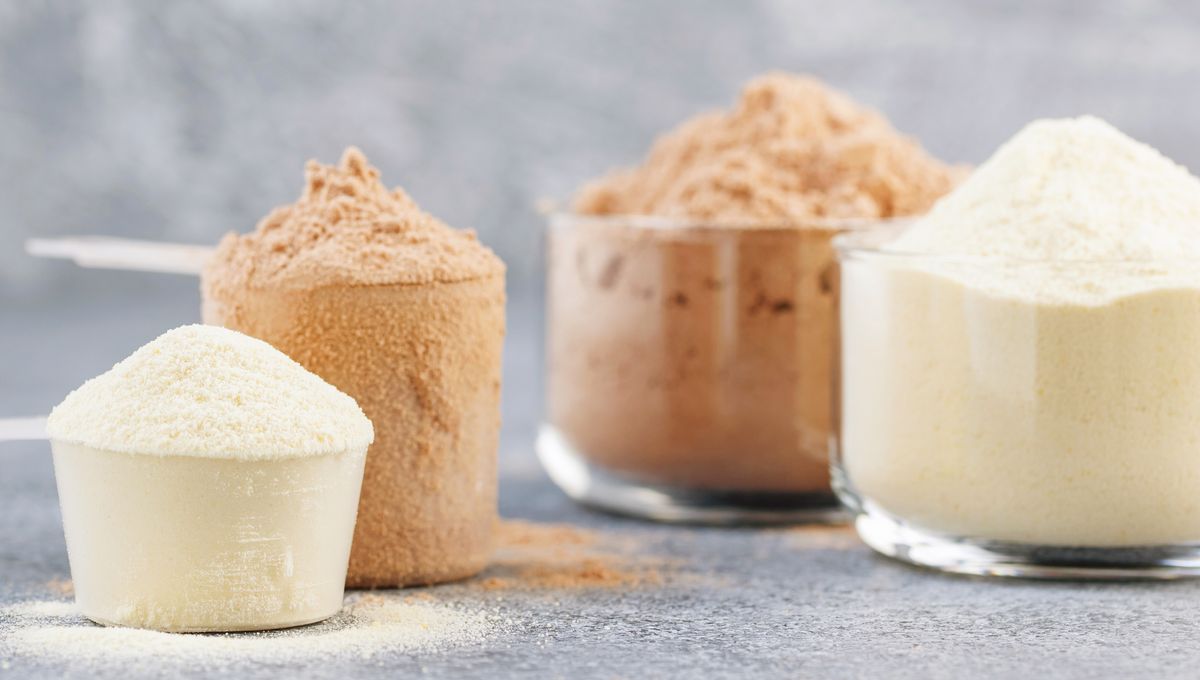
Many people like to drink dietary supplements for a pre-workout boost. These often contain caffeine, creatine, and other ingredients said to have benefits for exercise performance. Many come in powdered form, designed to be dissolved in liquid before consumption. However, a concerning trend sparked on TikTok and other social media platforms has seen a rise in the so-called “dry scooping” of these powders, and a new study of Canadian adolescents found that 16.9 percent of those surveyed had tried this technique in the preceding 12 months.
What is dry scooping and what are the risks?
Dry scooping literally means eating a scoop of powder without first mixing it into a drink. Those who remember the viral cinnamon challenge – for reference, we’re talking way back in the heady days of the Harlem shake and the ice bucket challenge – will be aware of the concept.
Apart from the unpleasantness of trying to swallow a mouthful of powdery dryness, there are some serious potential health consequences to be aware of. This was highlighted by one mother in 2015 after her four-year-old son tragically died when he accidentally ingested almost an entire container of cinnamon powder. The woman begged people still considering the viral challenge to think again, describing how the cinnamon powder entered her son’s lungs, eventually suffocating him.
Accidental inhalation and choking is a risk when ingesting any powdered substance in large quantity, but some of the ingredients that are specifically found in pre-workout supplements can cause their own set of problems.
Take, for example, caffeine. The doses of caffeine in these types of products can be very high, and taking the powder without diluting it first means you’re effectively getting all that caffeine in one go. This can lead to rapid heart rate, chest pain, and dizziness, among other symptoms. If not treated in time, caffeine toxicity can be fatal.
The US National Capital Poison Center also notes that pre-workout supplements are not well regulated, and therefore could contain other – potentially toxic – ingredients that are missing from the label.
Essentially, the message is that these products are supposed to be diluted for a reason, and should only be taken per the directions on the packaging. So why the rise in dry scooping in the first place, and how widespread is this trend?
Why are people dry scooping and how common is it?
The main justification for dry scooping is the claim that it allows the pre-workout supplements to be absorbed, and therefore take effect, more quickly than consuming them in the proper way. Speaking to Fatherly, primary care and sports medicine physician Dr Benedict Ifedi pointed out that, while that may be true, it’s not necessarily a good thing.
Aside from the risks we’ve already discussed around consuming large amounts of these ingredients in a short space of time, there isn’t a whole lot of research to suggest that pre-workout supplements are even worth bothering with in the first place.
A 2018 review found that certain pre-workout supplements could be a useful addition to an athlete’s training regimen, but highlighted the paucity of long-term safety studies, and the importance of discussing supplementation with a healthcare provider to ensure there are no interactions with other medications that might need to be taken into account. Another review highlighted the need for better regulation of these products, to try to mitigate the risks associated with fraudulent ingredient labeling. And, as dietician Kate Patton told Cleveland Clinic Health Essentials, you may be able to get all the same benefits from a carefully balanced diet.
With all the videos and media coverage warning about the dangers of dry scooping, though, there had not been an attempt by researchers to clarify how widespread the practice might be in different groups. That is, until a new study looked at data from 2,371 young people included in the Canadian Study of Adolescent Health Behaviors.
“To date […] there have been no epidemiological studies investigating the occurrence of dry scooping among young people, leaving significant information unknown,” said lead author Kyle T. Ganson, of the University of Toronto, in a statement.
In total, 16.9 percent of the young people included in the survey reported dry scooping within the previous year. It was significantly more common in those who identified as male (21.8 percent), compared with those identifying as female (14.2 percent), or transgender/gender non-conforming (8 percent).
Perhaps unsurprisingly, dry scooping was more likely to be reported by those who take part in weight training, and those who spend more of their time on social media. “Our data shows that novel dietary phenomena that become popularized on social media and within gym culture can lead to a greater likelihood of engagement,” said Ganson.
The researchers were also concerned about the link they found between dry scooping and clinical symptoms of muscle dysmorphia – a mental health condition in which people become preoccupied with building muscle due to the distorted perception that their bodies are too small. The need to achieve what they consider to be the ideal body may lead them to dangerous practices like dry scooping.
What’s clear from all of this is that more research is needed to better understand how pre-workout supplements may be affecting people over the long term, and how they may be safely incorporated into a fitness regimen. The researchers emphasized the need for better education about the potential harms of dry scooping, as well as greater awareness among health professionals.
“We need health care and mental health care providers to be knowledgeable of these unique dietary practices aimed at increasing performance and musculature, such as dry scooping,” Ganson concluded.
The new study is published in the journal Eating Behaviors.
Source Link: "Dry Scooping" Pre-Workout Powder Has Been Tried By 1 in 5 Young Men, Despite Risks